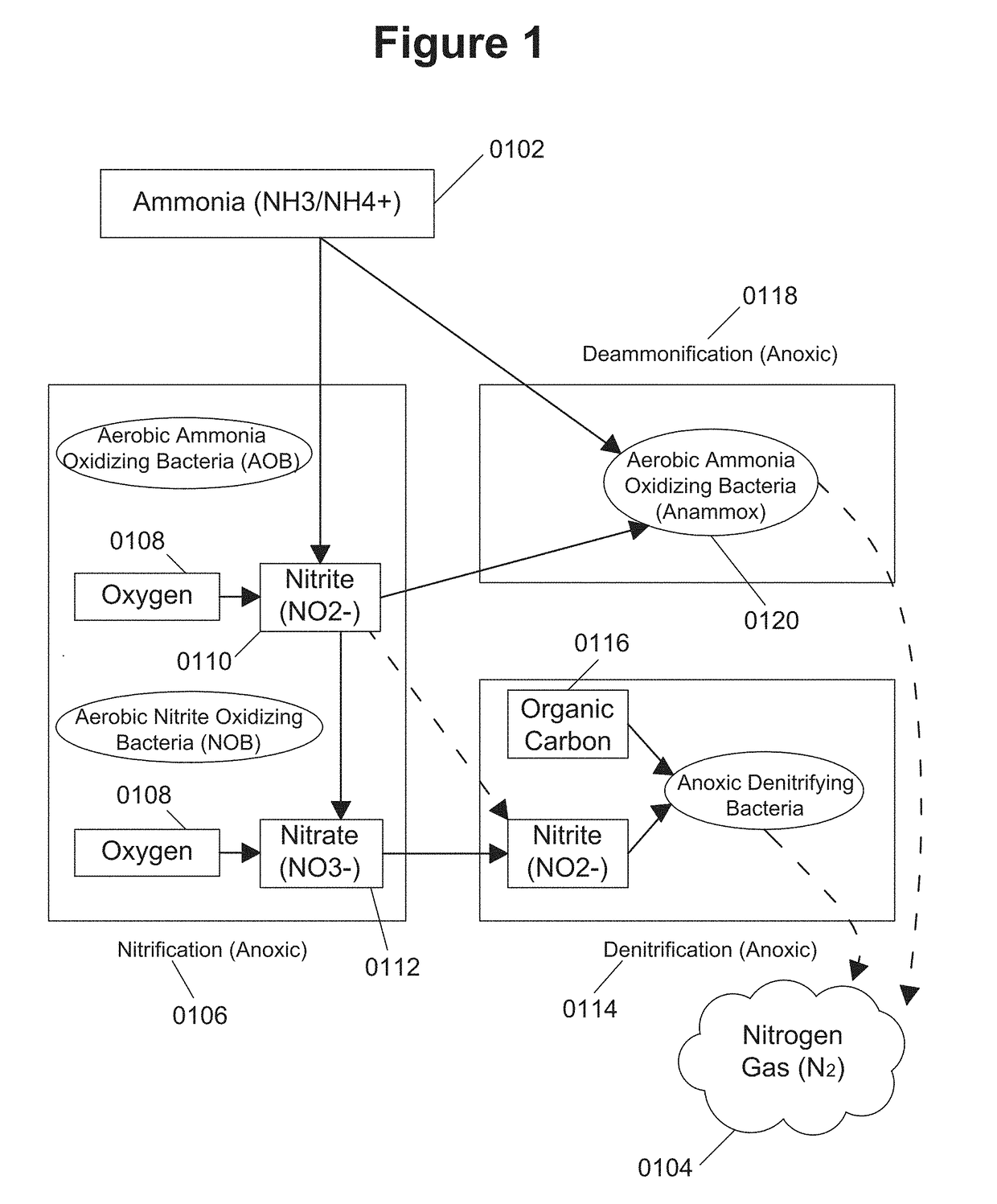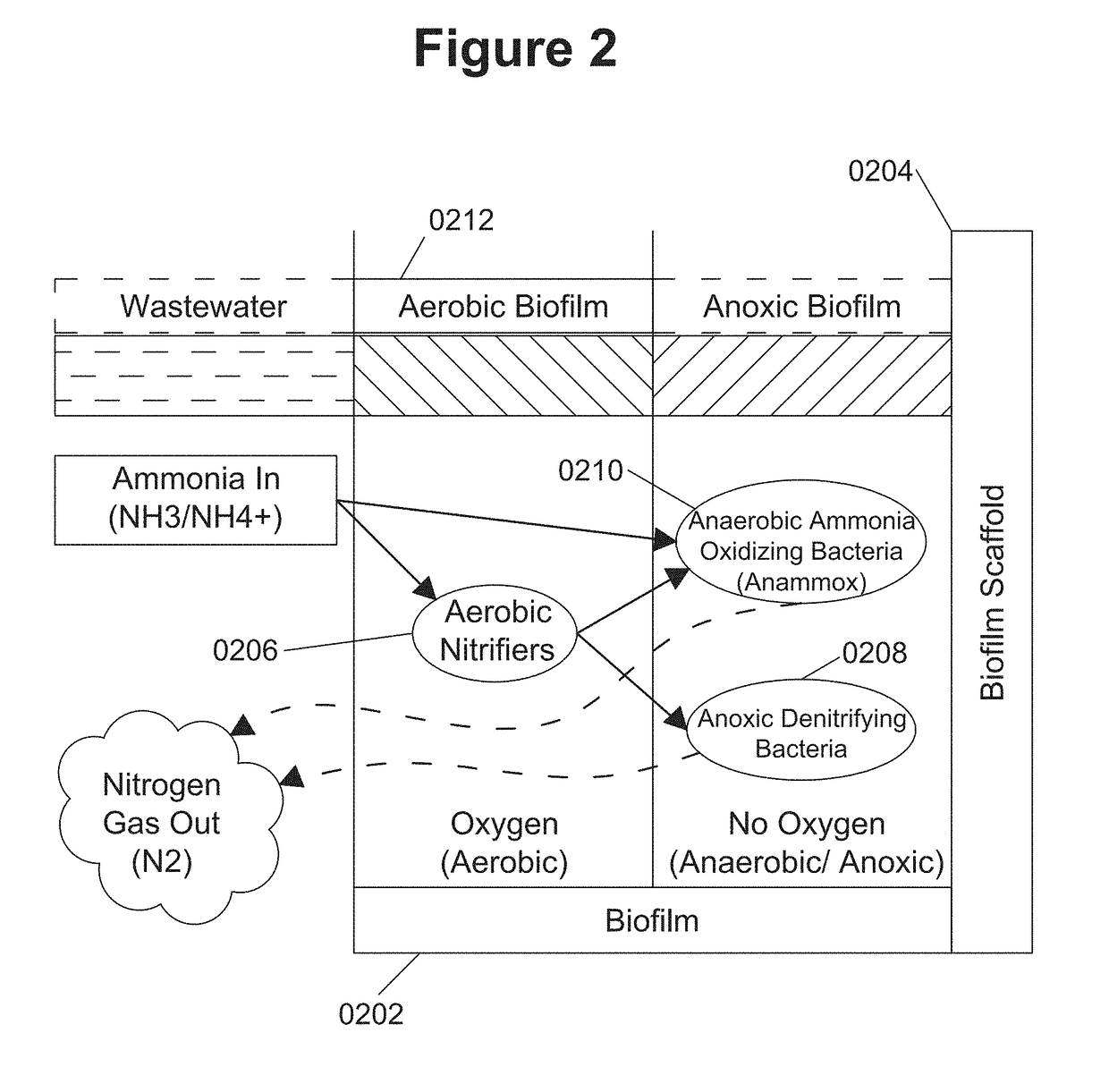Rapid startup of facilities and removal of organics and nutrients from wastewater
a technology of organic and nutrient removal and wastewater, which is applied in the direction of biological water/sewage treatment, water treatment parameter control, sustainable biological treatment, etc. it can solve the problems of reducing the efficiency of wastewater treatment, affecting the treatment effect, and not being able to successfully nitrify, denitrify and deammoniate wastewater concurrently, so as to improve the biome of organisms, reduce the cost of tankage and the required pumping. , the effect of less variabl
- Summary
- Abstract
- Description
- Claims
- Application Information
AI Technical Summary
Benefits of technology
Problems solved by technology
Method used
Image
Examples
Embodiment Construction
[0303]The embodiments listed are descriptions of possible combinations of features and are illustrative, not exhaustive. One skilled in the art could develop similar combinations that include or exclude certain items and these combinations are claimed as part of this invention.
8.1 Embodiment of Nitrification / Denitrification / and Deammonification (NDD) Treatment
[0304]An embodiment of NDD treatment consists of a single tank with scaffolds and complete mixing to evenly distribute influent, dissolved oxygen, and other constituents. In one embodiment the scaffolds have a high surface area that can accommodate growth of a biofilm such as Poret foam, an open reticulated polyurethane foam with surface area in the range of 1,000 m2 / m3. In another embodiment the surface area of the structure may vary from 1,00 m2 / m3 to 100,000 m2 / m3 with a frequently used range of 500 m2 / m3 to 5,000 m2 / m3. In another embodiment the scaffold is composed of highly porous ceramic material that can sustain high le...
PUM
| Property | Measurement | Unit |
|---|---|---|
| time | aaaaa | aaaaa |
| COD | aaaaa | aaaaa |
| COD | aaaaa | aaaaa |
Abstract
Description
Claims
Application Information
 Login to View More
Login to View More - R&D
- Intellectual Property
- Life Sciences
- Materials
- Tech Scout
- Unparalleled Data Quality
- Higher Quality Content
- 60% Fewer Hallucinations
Browse by: Latest US Patents, China's latest patents, Technical Efficacy Thesaurus, Application Domain, Technology Topic, Popular Technical Reports.
© 2025 PatSnap. All rights reserved.Legal|Privacy policy|Modern Slavery Act Transparency Statement|Sitemap|About US| Contact US: help@patsnap.com



